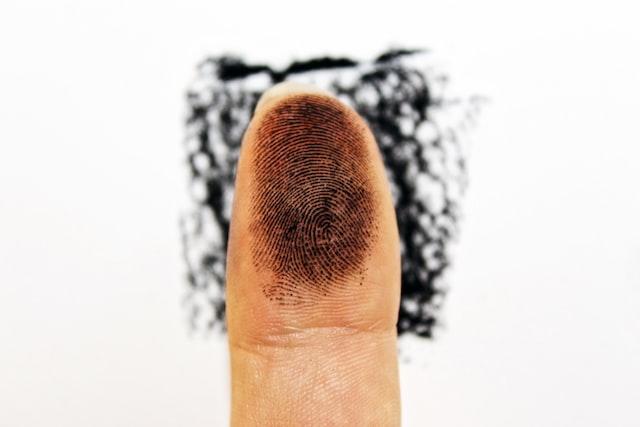
Identical twins come about when a single egg is fertilized by a single sperm and then split in two. These twins have the same genetic makeup and are always of the same sex.
Fraternal twins, on the other hand, develop from two separate eggs that were each fertilized by different sperm during the same pregnancy.
Like any other siblings, fraternal twins share only half their genes. Plus, they may be of different sexes and look dissimilar to one another.
How do fingerprints form?
Dermal ridges are the tiny lines and curves on our skin that form during fetal development and remain unchanged throughout our lifetime. The patterns formed by these ridges are what we know as fingerprints.
The dermal ridges on our fingertips contain sweat pores. When we touch something, the pressure causes these pores to release a latent print, which is an invisible print left behind by the oils on our skin.
Police officers use a powder to make latent prints visible so they can be lifted from the crime scene and analyzed.
While each person’s fingerprint is unique, there are general patterns that can be used for classification purposes.
The three main types of fingerprint patterns are loops, whorls, and arches. Approximately 60% of people have loop fingerprints, 30% have whorl fingerprints, and 10% have arch fingerprints.
From wallet-sized cards to cell phones, our fingerprints are becoming increasingly important in our digital world.
If you’ve ever used a touchscreen device, you’ve probably noticed that your fingerprint can be used to unlock it. In the future, it’s likely that our fingerprints will be used even more frequently as a form of identification.
Read also: How Many Calories Are in a Glass of Milk
Do identical twins have the same fingerprints?
The question of whether identical twins have the same fingerprints is a difficult one to answer definitively. This is because there is no agreed-upon definition of what constitutes a fingerprint.
Some people believe that fingerprints are completely unique to each individual, while others believe that identical twins may have similar enough fingerprints to be confused for one another.
There is some evidence that identical twins may indeed have similar fingerprints.
One study found that when identical twins were compared to non-twins, the twins had more similar fingerprints than the non-twins.
However, this study did not conclusively prove that identical twins have exactly the same fingerprints. More research is needed in order to determine with certainty whether or not identical twins share the same fingerprints.
Read also: Why Do My Armpits Smell Like Onions

What are the chances of identical fingerprints in twins?
Identical twins are born with the same genetic material, so they have very similar physical characteristics. This includes things like hair color, eye color, and skin tone.
But what about fingerprints? Are they also identical twins?
The odds of any two people having the same fingerprints are about 1 in 64 billion. So, if identical twins do have the same fingerprints, it would be a very rare occurrence.
Still, there have been some documented cases of identical twins with matching fingerprints.
In one case, two British brothers discovered that they had the same fingerprint patterns when they were both arrested for separate crimes and fingerprinted by the police.
While it is extremely unlikely for identical twins to have identical fingerprints, it is not impossible.
If you are an identical twin and you want to know for sure if you have the same fingerprints as your sibling, the best way to find out is to get fingerprinted yourselves!
Read also: Why Do I Keep Getting Sick
The bottom line
While identical twins share the same DNA, they don’t necessarily have the same fingerprints.
In fact, studies have shown that twins have different fingerprints about one-third of the time. There are a few theories as to why this is the case.
One possibility is that the twins’ fingerprints develop differently in the womb due to slight variations in their environment.
Another theory is that the twins’ fingerprints differ because of mutations that occur during development. Regardless of the reason, it’s clear that identical twins don’t always have identical fingerprints.



